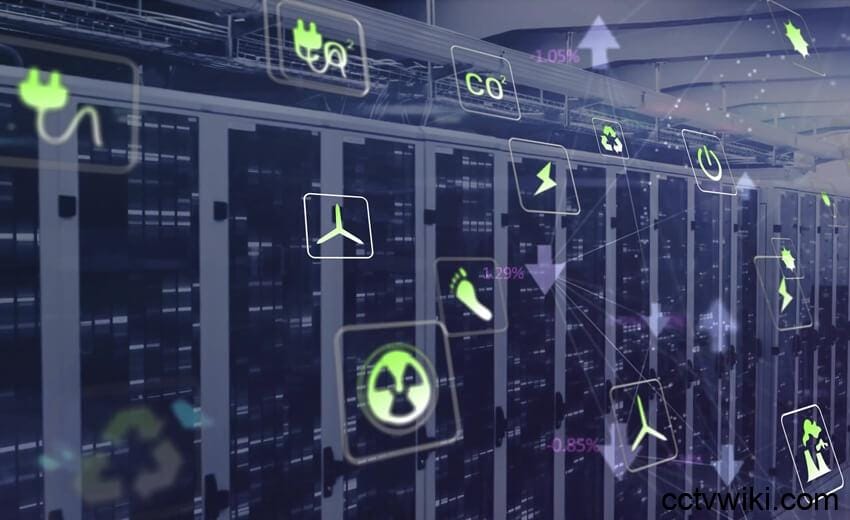AI’s meteoric rise is showing no signs of slowing, with generative AI becoming increasingly prevalent and demanding ever more computing power. The United States, home to over 5,300 data centers as of March 2024, is bracing for a potential doubling or even tripling of data center demand in the near future. This rapid expansion is putting immense pressure on the data center industry, both inside and outside the server room.
This surge in digital infrastructure seemingly clashes with the growing emphasis on green initiatives. AI’s insatiable need for power presents a significant challenge, limiting potential data center locations to areas with reliable connectivity and adequate energy supplies. The US lags behind in renewable energy adoption, with only 9% of its energy coming from sustainable sources in 2023. To navigate this expansion responsibly, the American data center industry must prioritize sustainability at every level, a task that will undoubtedly be challenging.
Sustainability, four ways
Beyond energy consumption, data center operators must consider four crucial aspects of sustainability when building new sites or upgrading existing ones: physical security, operational efficiency, disaster resilience, and cybersecurity. Neglecting any of these areas is not an option, and each presents opportunities for more sustainable practices.
The industry’s rapid growth adds to the complexity. Implementing innovative solutions across these four pillars while adhering to sustainable principles is a delicate balancing act, requiring careful selection of the right technologies. The fast pace of data center expansion can easily lead to overlooking crucial details. Sustainability requires not only commitment but also ingenuity and smart technological choices.
The importance of ingenuity
Consider security, for example. Switching to high-quality thermal, infrared, and low-light cameras can address security concerns at night, eliminating the need for additional lighting and boosting operational efficiency. However, these cameras offer much more than simple video streaming. They act as powerful sensors, capturing millions of data points every second.
Just as AI applications are expanding globally, so too can AI’s role within the data center. The same cameras used for security can monitor on-site personnel, using AI to detect if proper PPE is being worn, identify employee falls, integrate with access control systems for headcount during evacuations, and even detect loitering in restricted areas.
One sensor, many uses
Within the server room, cameras can safeguard entire racks, providing crucial visual indicators of overheating, smoke, or fire. They can also work with other sensors to facilitate complex operations like cooling adjustments. Moreover, the right cameras, designed with end-to-end cybersecurity principles, can assure operators that they cannot be exploited as entry points into the data center’s network.
These functions represent just a fraction of what a single sensor can achieve today, and further efficiencies and functionalities will undoubtedly emerge as data centers evolve. While these sensors form the backbone of internal improvements and contribute to reducing power consumption, their impact is limited. The future of digital infrastructure hinges on a massive increase in the availability of sustainable power.
Barriers to overcome
Public support for renewables remains a hurdle. Despite the US Department of Energy’s goal of achieving 100% carbon pollution-free energy by 2035, the US has seen twice as many solar and wind installations blocked as built over the past decade. Compared to many European nations, the Americas lag significantly behind in the adoption of renewable energy.
The silver lining is that data centers’ high power consumption positions operators as key drivers of sustainable energy solutions. Some data center sites have developed their own solar and wind farms, often in remote locations, leveraging remote monitoring and administration. Operators have invested in green energy power purchase agreements (PPAs), fueling the growth of the renewable energy industry. Data centers can even stabilize the grid by utilizing latent power and balancing renewable energy with fossil fuel power as needed.
The green power magnet
Ultimately, data centers will always prioritize power availability. The global race to become leading providers of AI technology makes geography secondary. Data center operators hold considerable sway because they will readily purchase green power if available, whether in the Americas or elsewhere.
Those countries, states, and cities that prioritize renewables and exceed global targets will thrive in the new AI economy. While data center providers focus on the broader picture outside the server room, they can adopt smarter, safer sustainability solutions within their facilities to ensure security without compromising their goals.

